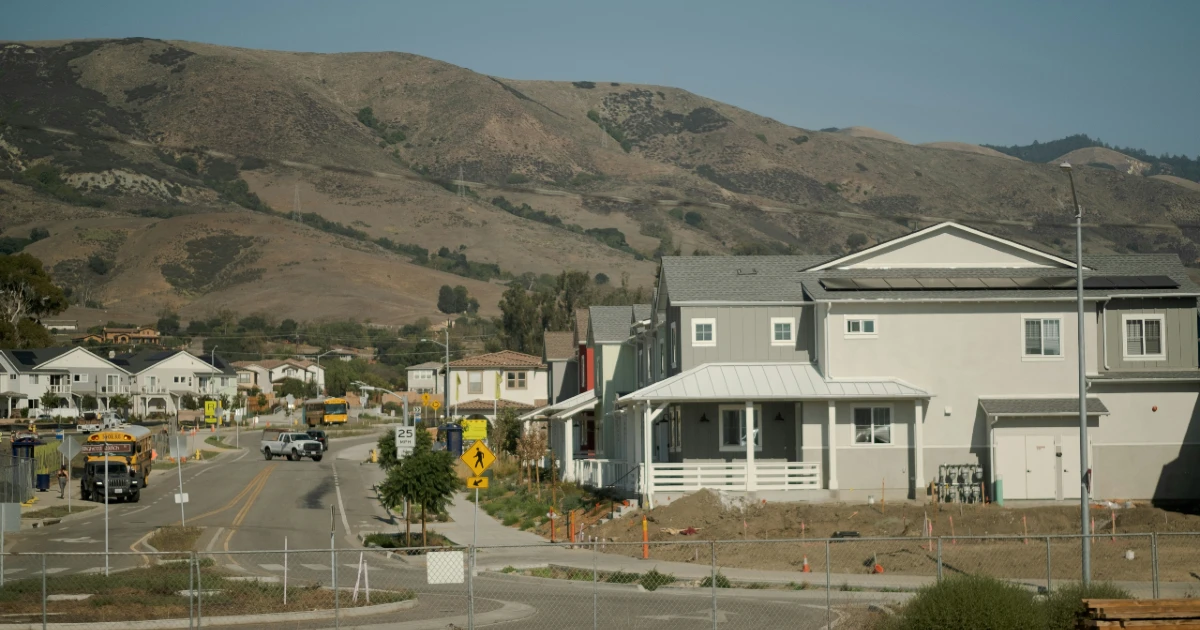You’ve probably noticed that insurance for coastal properties costs more than for inland homes. This price difference often leaves landlords wondering why.
If you own a property near the coast, you need to understand the factors driving up your insurance costs. Knowing these reasons can help you make informed decisions about your coverage.
Here’s a look at why coastal property insurance tends to be more expensive and what you can do about it.
What is coastal property insurance?
Coastal property insurance provides specialized coverage for homes located near the ocean or other large bodies of water. This type of insurance protects against risks unique to coastal areas, such as hurricanes, storm surges, and flooding.
Unlike standard homeowners insurance, coastal property insurance includes provisions for the heightened risks associated with living near water. These policies often have higher premiums due to the increased likelihood of natural disasters and the costly repairs that follow.
If you’re feeling frustrated by the high costs of insuring your seaside haven, you’re not alone. But understanding the "why" behind those premium prices can help you navigate your options better. For a comprehensive overview, check out this landlord insurance guide.
Why is insurance expensive for coastal properties?
Higher risk of natural disasters
Coastal areas face a higher risk of natural disasters compared to inland regions. Hurricanes, tropical storms, and storm surges frequently impact these areas, causing significant damage. Insurance companies factor in this elevated risk when calculating premiums. The likelihood of severe weather events means insurers must prepare for substantial claims, driving up the cost of coverage. Learn more about the factors influencing insurance premiums.
Increased likelihood of flooding
Low-lying coastal areas are particularly vulnerable to flooding. Rising sea levels and heavy rainfall contribute to frequent and severe flooding incidents. Homes in these regions face a constant threat of water damage, which can be extensive and costly to repair. This increased risk of flooding makes insurance more expensive, as insurers need to cover the potential for frequent and high-cost claims. Most landlord insurance policies exclude flood coverage, which must be purchased separately.
Costly repairs and rebuilding
Damage from saltwater, wind, and flooding can lead to expensive repairs and rebuilding efforts. Saltwater can corrode building materials, while high winds can cause structural damage. Flooding can ruin foundations, electrical systems, and personal property. Repairing or rebuilding homes in coastal areas often involves specialized materials and labor, adding to the overall cost. Additionally, after major hurricanes, the sudden high demand for materials can lead to significant cost increases, further driving up expenses. Insurers account for these higher expenses when setting premiums, resulting in more expensive insurance for coastal properties. For more insights, explore the factors influencing landlord insurance costs.
With all these risks in mind, it's clear that having the right coverage is essential. But what exactly should you be looking for in a coastal property insurance policy?
Types of coverage needed for coastal properties
Wind and hurricane coverage
Living near the coast means facing high winds and hurricanes more frequently. Wind and hurricane coverage protects your home from damage caused by these severe weather events. High winds can tear off roofs, break windows, and cause structural damage. Hurricanes bring even more destructive power, often leading to extensive repairs. This coverage ensures that you won't have to bear the full financial burden of these repairs. For more on protecting rental property, check out roof insurance for landlords.
Flood insurance
Flooding poses a significant risk to coastal properties. Standard homeowners policies typically exclude flood damage, making flood insurance a necessary addition. This coverage protects against damage from rising water levels, heavy rainfall, and storm surges. Flood insurance covers the cost of repairing or replacing your home and belongings damaged by floodwaters. Given the increasing frequency of severe weather and rising sea levels, having flood insurance provides peace of mind and financial protection.
Additional living expenses (ALE) coverage
If a covered loss makes your home uninhabitable, Additional Living Expenses (ALE) coverage steps in. This coverage pays for temporary housing, meals, and other expenses while your home undergoes repairs. Whether you need to stay in a hotel or rent a temporary residence, ALE ensures you have a place to live without draining your savings. It covers costs like dining out, laundry, and other necessities that arise when you're displaced from your home. This coverage helps maintain your standard of living during a challenging time. For more on understanding your policy, see our guide on reading a property insurance form.
Understanding the different factors that affect your insurance rates can help you make smarter choices. So, what exactly drives up those premiums?
What factors affect coastal property insurance rates?
Location and proximity to water
The location of your home plays a significant role in determining your insurance premiums. Homes closer to the water face higher risks from storm surges, hurricanes, and flooding. These risks translate to higher premiums as insurers account for the increased likelihood of claims. The scenic views and beach access come with the trade-off of higher insurance costs. Insurers evaluate the exact distance from the shoreline and the elevation of your property to assess the risk accurately. For more insights, see where rising insurance premiums for landlords are occurring.
Age and construction of your home
The age and construction of your home also impact your insurance rates. Older homes may not meet modern building codes designed to withstand coastal conditions. They might lack features like storm shutters, impact-resistant windows, or elevated foundations, making them more vulnerable to damage. Homes built with outdated materials or techniques may incur higher repair costs, leading insurers to charge more for coverage. On the other hand, newer homes built to current standards often benefit from lower premiums due to their enhanced durability and safety features.
Claims history
Your claims history significantly influences your insurance premiums. A history of frequent or costly claims signals to insurers that your property is at a higher risk of future incidents. Each claim you file can lead to an increase in your premiums, as insurers adjust rates to cover the anticipated risk. If you've made multiple claims for storm damage, flooding, or other issues, expect your insurance costs to reflect that history. Insurers use this data to predict the likelihood of future claims and set premiums accordingly. For more on navigating these factors, see our guide on navigating landlord insurance.
High premiums can feel like an unavoidable burden, but there are ways to bring those costs down. Here are some practical tips to help you save on your coastal property insurance.
5 tips for lowering your coastal property insurance premiums
Install storm shutters and impact-resistant windows
Installing storm shutters and impact-resistant windows can significantly reduce your insurance premiums. These upgrades protect your home from high winds and flying debris during hurricanes and tropical storms. Insurers often offer discounts for homes with these features because they minimize the risk of damage. Storm shutters and impact-resistant windows can prevent costly repairs and help maintain the structural integrity of your home. By investing in these protective measures, you demonstrate to insurers that your property is better equipped to withstand severe weather, leading to lower premiums.
Elevate your home to reduce flood risk
Elevating your home can effectively reduce the risk of flood damage, which in turn can lower your insurance costs. Homes in flood-prone areas benefit from being raised above the base flood elevation (BFE). This elevation reduces the likelihood of water entering your home during heavy rainfall or storm surges. Insurers recognize the reduced risk and often provide lower premiums for elevated homes. While elevating a home can be a significant investment, the long-term savings on insurance and the added protection against flooding make it a worthwhile consideration.
Maintain a good credit score
Maintaining a good credit score can positively impact your insurance premiums. Insurers use credit scores as one of the factors to determine the likelihood of a policyholder filing a claim. A higher credit score indicates financial responsibility and a lower risk of filing claims. To keep your credit score in good standing, pay bills on time, reduce outstanding debt, and monitor your credit report for errors. A good credit score not only helps you secure better loan rates but also lowers your insurance premiums, making it a valuable asset in managing your overall financial health.
Choose a higher deductible
Opting for a higher deductible can lower your insurance premiums. A deductible is the amount you pay out of pocket before your insurance coverage kicks in. By choosing a higher deductible, you agree to take on more financial responsibility in the event of a claim. Insurers reward this choice with lower premiums because it reduces their risk. However, ensure that you select a deductible amount you can comfortably afford in case of an emergency. Balancing a higher deductible with your financial situation can lead to significant savings on your insurance costs.
Regularly review and update your coverage
Regularly reviewing and updating your insurance coverage ensures that you have adequate protection without overpaying. As property values, building costs, and personal circumstances change, your insurance needs may also evolve. Conduct an annual review of your policy to verify that it accurately reflects the current value of your home and belongings. Update your coverage to include any home improvements or additions that increase your property's value. Removing unnecessary coverage or adjusting limits can also help reduce premiums. Staying proactive with your insurance policy ensures you receive the best possible rates while maintaining adequate protection. For more tips, check out our property maintenance tips.
Understanding the different factors that affect your insurance rates can help you make smarter choices. For more insights, explore answers to common landlord insurance questions.
By following these tips and understanding the factors that influence your insurance premiums, you can better manage the costs associated with insuring your coastal property.






.png)
.jpg)
.jpg)


.png)